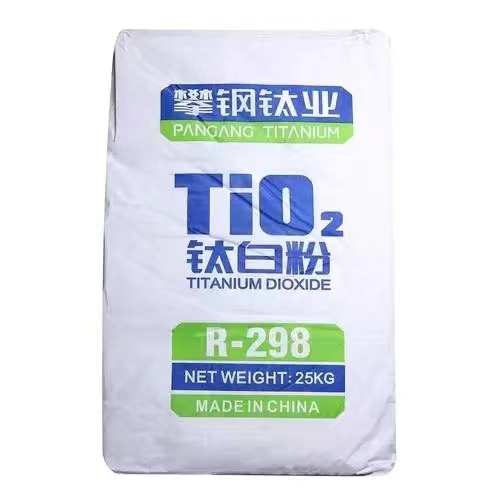
Desemba . 03, 2024 11:26 Back to list
tio2 water treatment
The Role of TiO2 in Water Treatment An Innovative Approach to Purification
Water is an essential resource for all forms of life, and its quality directly impacts human health and the environment. As industrialization and urbanization continue to rise, the demand for effective water treatment solutions has never been more critical. One promising approach to address water pollution challenges is the use of titanium dioxide (TiO2) as a photocatalyst in water treatment processes. This article explores the properties of TiO2, its mechanisms of action in water purification, and its applications in modern purification technologies.
Understanding Titanium Dioxide (TiO2)
Titanium dioxide is a widely studied semiconductor with exceptional photocatalytic properties. When exposed to ultraviolet (UV) light, TiO2 can absorb energy and generate highly reactive species, primarily hydroxyl radicals and superoxide ions. These reactive species can effectively degrade various organic pollutants, including dyes, pesticides, and pharmaceutical residues, making TiO2 a valuable asset in water treatment applications.
Mechanism of Photocatalysis
The photocatalytic process involves several steps. Initially, when TiO2 is irradiated with UV light (typically in the wavelength range of 200-400 nm), it can excite electrons from its valence band to its conduction band, creating electron-hole pairs. The electrons are then capable of reducing molecular oxygen dissolved in water to produce superoxide radicals, while the holes can oxidize water molecules to generate hydroxyl radicals.
These hydroxyl radicals are known for their high reactivity and ability to degrade organic contaminants through mineralization, which converts pollutants into harmless compounds such as carbon dioxide and water. This process not only purifies the water but also helps eliminate pathogens, making TiO2 an effective agent for disinfection.
Advantages of TiO2 in Water Treatment
One of the key advantages of using TiO2 in water treatment is its non-toxic and stable nature, making it environmentally friendly. Unlike many chemical treatments, TiO2 does not generate secondary pollutants, ensuring that the treated water is safe for human consumption and ecological systems.
tio2 water treatment

Moreover, TiO2 can function under various conditions. While it is primarily effective with UV light, research has shown that modifications in TiO2's structure can enhance its performance under visible light, broadening its applicability. This adaptability makes it suitable for different water treatment settings, including wastewater, stormwater, and drinking water purification systems.
Applications of TiO2 in Water Treatment
The application of TiO2 in water treatment spans multiple strategies and technologies. One common approach is its incorporation into photocatalytic reactors, where TiO2 is immobilized on substrates to facilitate the degradation of contaminants in flowing water. This method is particularly effective for treating industrial effluents loaded with complex organic pollutants.
Another innovative application involves TiO2-coated membranes in membrane filtration systems. These membranes, treated with TiO2, exhibit enhanced antifouling properties and can degrade organic foulants even while filtering water. This capability extends the lifespan of membrane systems and enhances overall efficiency.
Challenges and Future Perspectives
Despite its promising potential, the use of TiO2 in water treatment does face certain challenges. One major limitation is the requirement for UV light, which restricts its effectiveness during nighttime or in areas with low sunlight exposure. However, ongoing research into the development of visible light-active TiO2 photocatalysts could address this issue.
Additionally, the reusability of TiO2 catalysts must be considered. While TiO2 can be regenerated through various methods, including thermal treatment, ensuring the sustainability of photocatalytic systems in real-world applications remains an area of active research.
Conclusion
In summary, titanium dioxide presents a revolutionary approach to water treatment, leveraging its photocatalytic properties to degrade pollutants, eliminate pathogens, and purify water effectively. Its environmental friendliness and adaptability to diverse conditions make it a suitable candidate for modern water treatment technologies. As research continues to advance, the potential applications of TiO2 are expected to expand, offering new solutions to meet the growing global demand for clean and safe water. With innovative approaches and ongoing advancements, TiO2 may soon play a pivotal role in ensuring water quality and sustainability for future generations.
-
Best Baso4 Price Wholesale & Manufacturer Deals in China
NewsApr.29,2025
-
Rutile Titanium Dioxide R698 Supplier Coating & Paint Solutions
NewsApr.29,2025
-
Premium Titanium Dioxide Ultra White Paint High-Coverage & Durable
NewsApr.29,2025
-
China Titanium & TiO2 Powder Factory Reliable Rutile & Lithopone Supplier
NewsApr.28,2025
-
Titanium Dioxide Types High-Purity Grades from Trusted Factories & Suppliers
NewsApr.28,2025
-
High-Quality Titanium Dioxide White Pigments Wholesale Supplier
NewsApr.28,2025
